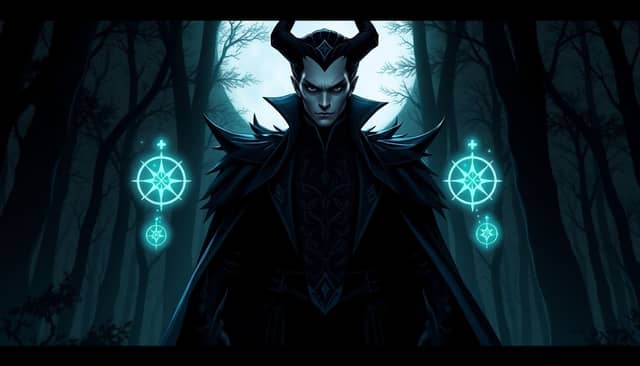Table of Contents
Let’s face it, creating a villain who’s actually believable can feel pretty tricky—you don’t want someone too cliché or boring. We’ve all seen those predictable bad guys that just seem randomly evil, without any real reason behind it.
But don’t worry, crafting a villain who feels real and keeps readers hooked isn’t as tough as you might think. Here, you’ll pick up simple tips to shape memorable motivations, intriguing backstories and realistic conflicts for your villain.
Ready to make your villain unforgettable? Let’s jump right in!
Key Takeaways
- Create relatable villains by connecting their behaviors and feelings to common human experiences, such as jealousy, insecurity, or grief.
- Clearly define your villain’s motivation, like revenge or seeking validation, to help readers understand their actions.
- Build a solid backstory that explains why your villain became who they are, including past traumas or turning points.
- Make a strong first impression—introduce your villain in a memorable, high-stakes moment.
- Balance strengths (smart and powerful) with weaknesses (internal struggles or flaws) to make your villain realistic and interesting.
- Add depth through conflicts, both external challenges and internal doubts.
- Avoid stereotypes; give your villain unique traits or unexpected fears to make them feel fresh and original.

Step 1: Make Your Villain Relatable
Okay, so you want a villain readers actually care about, right? No one enjoys those flat cartoon bad guys that just cackle and twirl their mustaches all day. Making your villain relatable is the key here—someone your readers might even find themselves secretly rooting for.
The trick? Connect the villain’s traits and experiences to something universal or familiar. For example, insecurity, jealousy, grief, or overcoming rejection can make your villain more relatable. Take Maleficent, who went from being a purely evil fairy in Sleeping Beauty to having her own sympathetic story because she experienced betrayal and heartbreak. Readers couldn’t help but relate to her pain.
Another tip: try giving your villain some characteristics similar to traits your protagonist has. Maybe they mirror the hero’s ambition or stubbornness. Think Batman and Joker—both share obsessive behaviors and morally gray areas, making their clashes much more interesting.
If you aren’t sure where to start, you might try exploring some writing prompts or checking out some horror story plot ideas. This can spark fresh inspiration for relatable villain traits you haven’t considered yet.
Step 2: Give Your Villain a Clear Motivation
Writing a villain who does evil stuff “just because they’re bad” is lazy and boring, honestly. Instead, your villain needs a clear, understandable motivation. This is the backbone that lines up their entire evil plan and makes your reader nod along, thinking, “Yeah, that makes sense—even if it’s kind of wrong.”
Clearly defining your villain’s goals makes them purposeful and consistent. Maybe your villain wants revenge after being wronged, desires ultimate power due to a history of fragility and weakness, or seeks validation they’ve never received. Any of these clear reasons can elevate a villain from forgettable to fascinating.
Think of Darth Vader from Star Wars. Sure, he’s intimidating with that iconic breathing and sinister voice (liked by 39% of villain enthusiasts according to recent studies), but his clear motivation—holding onto power and control after losing literally everything he cared about—is what makes him memorable. Fans understand him, even if they don’t support his choices.
So ask yourself: What’s your villain fighting for? What can’t they live without? Answering these questions early makes your villain way more believable.
Step 3: Create a Strong Backstory
Giving your villain a compelling backstory isn’t just fluff—it helps readers understand why they turned dark in the first place. The best villain backstories show believable reasons behind their bad choices, painting them as real people who simply took a wrong turn somewhere down the road.
Maybe your villain experienced a traumatic childhood or suffered unjustly at the hands of others. Perhaps they had a happy life only to have it ripped away drastically, pivoting their entire personality toward vengeance or despair. For instance, Oogie Boogie from The Nightmare Before Christmas, hugely popular with Millennials, implies a playful yet twisted past that led him down the road of mischief and villainy.
While crafting this backstory, try to connect it with your main character or the theme of your story. Say your protagonist and villain were once genuine friends who experienced betrayal. Or perhaps they share mirrored experiences of tragedy that turned them in opposite directions, adding emotional depth and dramatic tension.
If you’re stuck, working with some dystopian plot generators or unique writing prompts can help jog ideas for tragic backstories or complicated pasts that really add depth to your villain’s character.

Step 4: Introduce Your Villain With Impact
Ever heard the saying, “First impressions matter”? Well, it applies double to your villain.
When they first enter the scene, your villain should leave a memorable impression that sticks with your readers.
A good tip here is to introduce your villain during an intense or crucial moment.
Think of Ursula’s appearance in The Little Mermaid; right away you know she’s manipulative and dangerous just from her confident demeanor and distinctive laugh.
Another idea is to highlight their unique qualities—maybe they have cool powers, amazing costumes, or a sinister voice, like the 39% of people who find that voice trait appealing.
Make that first villain scene count: reveal just enough to keep readers intrigued, but don’t give away every detail—or motivation—right off the bat.
This creates suspense and keeps your audience reading to learn more.
Step 5: Show Your Villain’s Strengths and Weaknesses
No villain should be totally unstoppable or totally helpless—balance is key here.
Showing strengths makes them appear threatening and worthy as an antagonist, but revealing weaknesses makes them believable and even vulnerable.
For strengths, consider elements people genuinely like: amazing powers (41% of villain fans appreciate this) or a sharp intellect.
Look at Maleficent—her status as a powerful sorceress and her commanding presence make her fascinatingly dangerous.
But weaknesses are just as important—every villain needs a flaw.
Think of Darth Vader; despite his strength and command, his lingering connection to family ultimately becomes his Achilles heel.
A mix of strengths and weaknesses has your reader seeing your villain as human, complicated, and real.
Step 6: Create Conflicts for Your Villain
A villain’s life shouldn’t be easy—otherwise, they’d just snap their fingers and succeed in their plans, right?
So make things tough for them—create internal and external conflicts to provide depth and tension.
External conflicts are easy; your hero, for starters, is already getting in the villain’s way.
Maybe there are rival antagonists competing for power too, adding complexity.
Internal conflicts can be even more interesting.
Perhaps your villain struggles with guilt from their actions or hesitates between their ambition and morality.
If you’re feeling stuck creating believable conflicts, checking out these winter writing prompts could help spark fresh ideas for intense struggles your villain must face.
Step 7: Avoid Common Villain Stereotypes
We’ve all read stories or watched movies with villains that felt too familiar and predictable.
To steer clear of stereotypes, stay away from tired clichés like the excessively evil villain who has no redeeming qualities, or the mustache-twirling bad guy who’s evil for no reason.
Also avoid giving your villain predictable characteristics such as dark clothing, mysterious scars, or solitary castle lairs unless these elements truly serve your plot.
Try mixing things up instead.
If your villain has supernatural powers, like 41% of people prefer, give them an unusual limitation or surprising personal habit, like being afraid of thunderstorms.
If you’re looking to create a more original villain, you might find it helpful to read tips on creating medium content books where character complexity really pays off.
Remember, originality and nuance are your friends here, helping ensure your villain stands out rather than fades into the background.
FAQs
Give your villain recognizable human emotions, struggles, and relatable traits. Let your audience see their perspective and reasoning clearly. Creating empathy with genuine motives and vulnerabilities will help make them more believable and engaging.
An effective villain is driven by motivations such as revenge, survival, love, or conviction in their ideology. Clearly defined goals and relatable reasoning behind actions help audiences connect and maintain interest in your villain’s journey.
Introduce your villain with a strong scene that clearly shows their personality, power, or unique traits. Reveal their presence through significant conflict or memorable dialogue to immediately establish fascination and audience anticipation for their role in the story.
Avoid clichés like purely evil villains without depth, villains giving lengthy monologues, or predictable plans. Provide nuance by adding complexity, flaws, realistic motives, and relatable characteristics, ensuring your villain is uniquely compelling and memorable to readers.



